Deck 2: Graphs of Equations
سؤال
سؤال
سؤال
سؤال
سؤال
سؤال
سؤال
سؤال
سؤال
سؤال
سؤال
سؤال
سؤال
سؤال
سؤال
سؤال
سؤال
سؤال
سؤال
سؤال
سؤال
سؤال
سؤال
سؤال
سؤال
سؤال
سؤال
سؤال
سؤال
سؤال
سؤال
سؤال
سؤال
سؤال
سؤال
سؤال
سؤال
سؤال
سؤال
سؤال
سؤال
سؤال
سؤال
سؤال
سؤال
سؤال
سؤال
سؤال
سؤال
سؤال
سؤال
سؤال
سؤال
سؤال
سؤال
سؤال
سؤال
سؤال
سؤال
سؤال
سؤال
سؤال
سؤال

فتح الحزمة
قم بالتسجيل لفتح البطاقات في هذه المجموعة!
Unlock Deck
Unlock Deck
1/63
العب
ملء الشاشة (f)
Deck 2: Graphs of Equations
1
Determine which of the following point lies on the graph of the equation.
A)(6,0)
B)(7,6)
C)(8,6)
D)(6,7)
E)(6,8)
A)(6,0)
B)(7,6)
C)(8,6)
D)(6,7)
E)(6,8)
(6,0)
2
Determine which of the following point lies on the graph of the equation.
A)(2,10)
B)(2,9)
C)(2,8)
D)(9,8)
E)(3,8)
A)(2,10)
B)(2,9)
C)(2,8)
D)(9,8)
E)(3,8)
(2,8)
3
Determine which of the following point lies on the graph of the equation.
Y = |x - 2| + 4
A)(5,7)
B)(5,9)
C)(5,8)
D)(8,7)
E)(6,7)
Y = |x - 2| + 4
A)(5,7)
B)(5,9)
C)(5,8)
D)(8,7)
E)(6,7)
(5,7)
4
Which of the following graphs are symmetric about the y-axis?
A)
B)
C)
D)
E)
A)
B)
C)
D)
E)

فتح الحزمة
افتح القفل للوصول البطاقات البالغ عددها 63 في هذه المجموعة.
فتح الحزمة
k this deck
5
Determine which of the following point lies on the graph of the equation.
A)(3,1)
B)(2,3)
C)(4,1)
D)(2,1)
E)(2,2)
A)(3,1)
B)(2,3)
C)(4,1)
D)(2,1)
E)(2,2)

فتح الحزمة
افتح القفل للوصول البطاقات البالغ عددها 63 في هذه المجموعة.
فتح الحزمة
k this deck
6
Write the standard form of the equation of the circle with the given characteristics.
Center: (6,1);Solution point: (5,9)
A)
B)
C)
D)
E)
Center: (6,1);Solution point: (5,9)
A)
B)
C)
D)
E)

فتح الحزمة
افتح القفل للوصول البطاقات البالغ عددها 63 في هذه المجموعة.
فتح الحزمة
k this deck
7
A hospital purchases a new magnetic resonance imaging (MRI)machine for $600,000.The depreciated value y (reduced value)after t years is given by y = 600,000 - 20,000t,0 ≤ t ≤ 6.Sketch the graph of the equation.
A)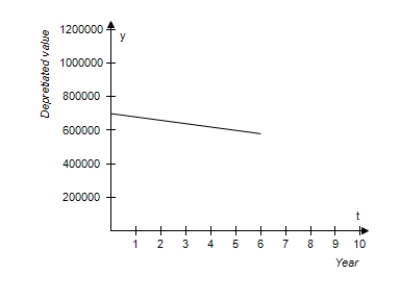
B)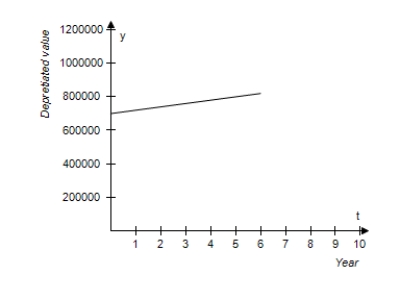
C)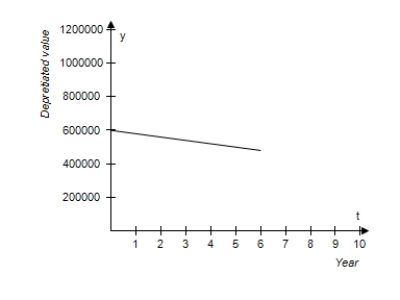
D)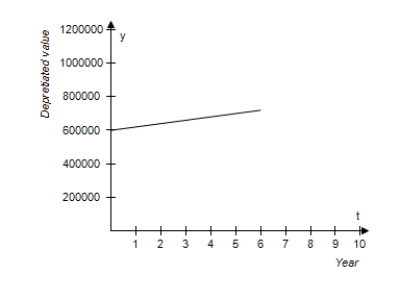
E)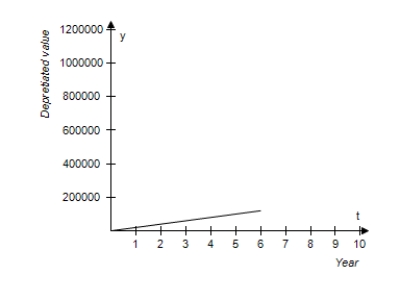
A)

B)

C)

D)

E)


فتح الحزمة
افتح القفل للوصول البطاقات البالغ عددها 63 في هذه المجموعة.
فتح الحزمة
k this deck
8
Identify any intercepts and test for symmetry.Then sketch the graph of the equation.
Y = |x - 4|
A)x- intercept: (4,0) y- intercept: (0,4)
No symmetry
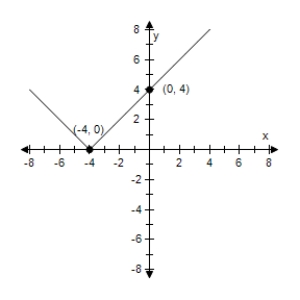
B)x- intercept: (-4,0) y- intercept: (0,4)
No symmetry
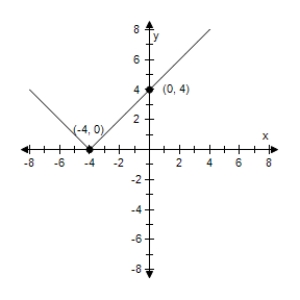
C)x- intercept: (4,0) y- intercept: (4,0)
No symmetry
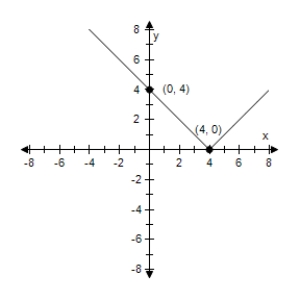
D)x- intercept: (4,0) y- intercept: (0,4)
No symmetry
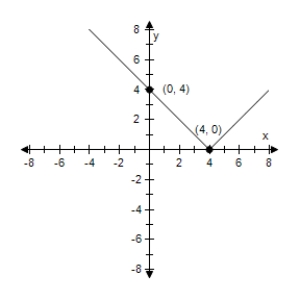
E)x- intercept: (4,0) y- intercept: (4,0)
No symmetry
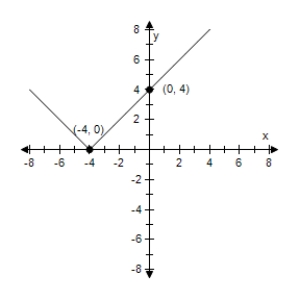
Y = |x - 4|
A)x- intercept: (4,0) y- intercept: (0,4)
No symmetry

B)x- intercept: (-4,0) y- intercept: (0,4)
No symmetry

C)x- intercept: (4,0) y- intercept: (4,0)
No symmetry

D)x- intercept: (4,0) y- intercept: (0,4)
No symmetry

E)x- intercept: (4,0) y- intercept: (4,0)
No symmetry


فتح الحزمة
افتح القفل للوصول البطاقات البالغ عددها 63 في هذه المجموعة.
فتح الحزمة
k this deck
9
Find the center and radius of the circle,and sketch its graph.
A)Centre (0,0),Radius 16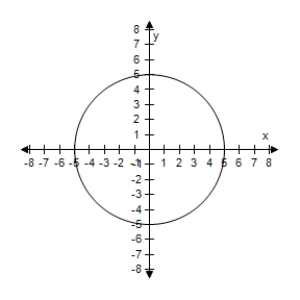
B)Centre (0,0),Radius 4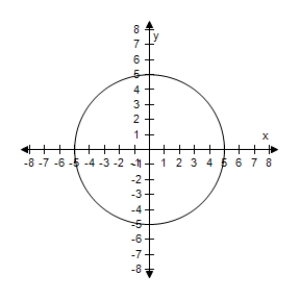
C)Centre (0,0),Radius 4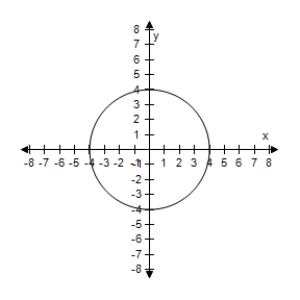
D)Centre (0,0),Radius 16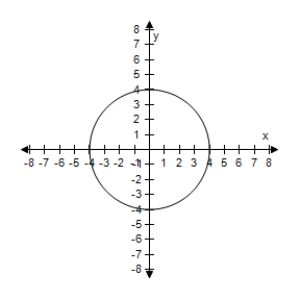
E)Centre (0,0),Radius 4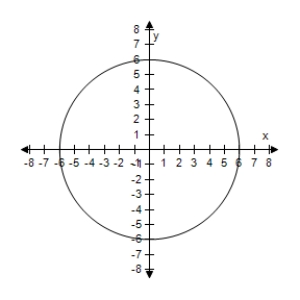
A)Centre (0,0),Radius 16

B)Centre (0,0),Radius 4

C)Centre (0,0),Radius 4

D)Centre (0,0),Radius 16

E)Centre (0,0),Radius 4


فتح الحزمة
افتح القفل للوصول البطاقات البالغ عددها 63 في هذه المجموعة.
فتح الحزمة
k this deck
10
Complete the table.
A)
B)
C)
D)
E)
A)
B)
C)
D)
E)

فتح الحزمة
افتح القفل للوصول البطاقات البالغ عددها 63 في هذه المجموعة.
فتح الحزمة
k this deck
11
Identify any intercepts and test for symmetry.Then sketch the graph of the equation.
Y = x2 - 4x
A)x-intercept : (0,0), (4,0) y-intercept : (0,0)
No symmetry
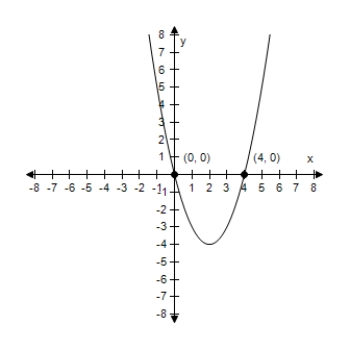
B)x-intercept : (0,0), (-4,0) y-intercept : (0,1)
No symmetry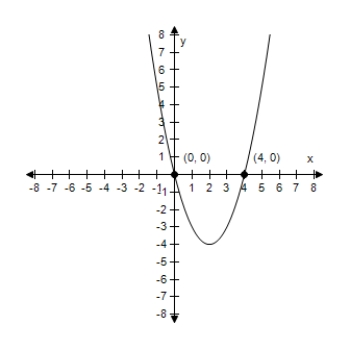
C)x-intercept : (4,0), (4,0) y-intercept : (0,1)
No symmetry
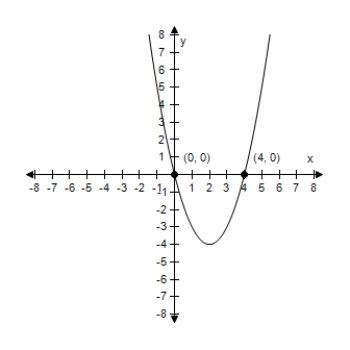
D)x-intercept : (0,0), (4,0) y-intercept : (0,1)
No symmetry
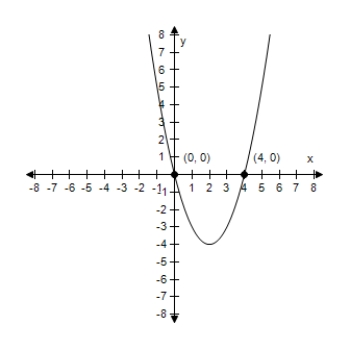
E)x-intercept : (0,0), (4,0) y-intercept : (0,-1)
No symmetry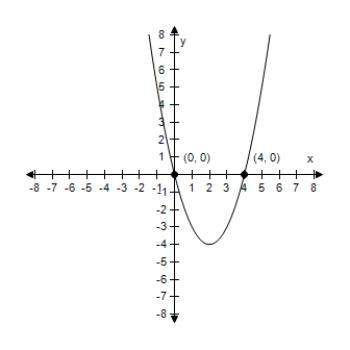
Y = x2 - 4x
A)x-intercept : (0,0), (4,0) y-intercept : (0,0)
No symmetry

B)x-intercept : (0,0), (-4,0) y-intercept : (0,1)
No symmetry

C)x-intercept : (4,0), (4,0) y-intercept : (0,1)
No symmetry

D)x-intercept : (0,0), (4,0) y-intercept : (0,1)
No symmetry

E)x-intercept : (0,0), (4,0) y-intercept : (0,-1)
No symmetry


فتح الحزمة
افتح القفل للوصول البطاقات البالغ عددها 63 في هذه المجموعة.
فتح الحزمة
k this deck
12
You purchase an all-terrain vehicle (ATV)for $2,000.The depreciated value y after t years is given by y = 2,000 – 500t, 0 ≤ t ≤ 6. .Sketch the graph of the equation.
A)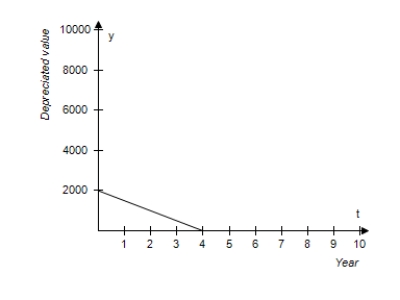
B)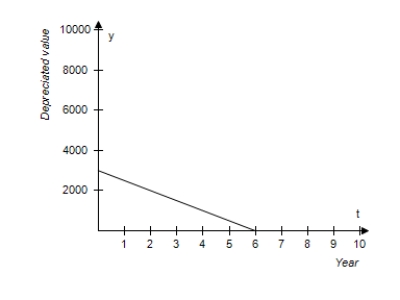
C)
D)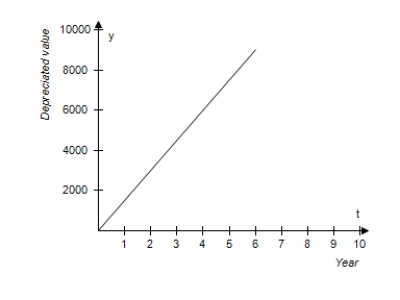
E)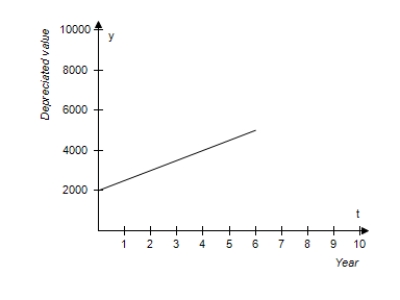
A)

B)

C)

D)

E)


فتح الحزمة
افتح القفل للوصول البطاقات البالغ عددها 63 في هذه المجموعة.
فتح الحزمة
k this deck
13
Complete the table
-Use the resulting solution points to sketch the graph of the equation.
y = -2x + 3
A)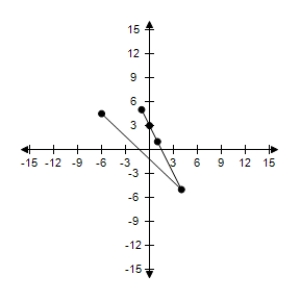
B)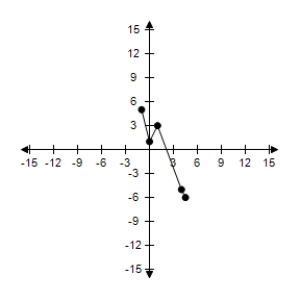
C)
D)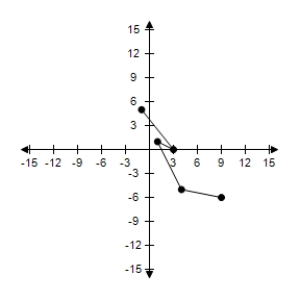
E)

-Use the resulting solution points to sketch the graph of the equation.
y = -2x + 3
A)

B)

C)

D)

E)


فتح الحزمة
افتح القفل للوصول البطاقات البالغ عددها 63 في هذه المجموعة.
فتح الحزمة
k this deck
14
Find the center and radius of the circle,and sketch its graph.
A)Centre ,Radius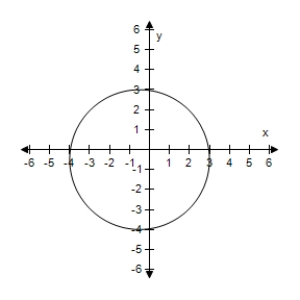
B)Centre ,Radius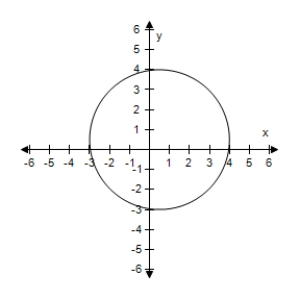
C)Centre ,Radius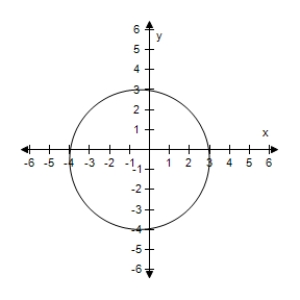
D)Centre ,Radius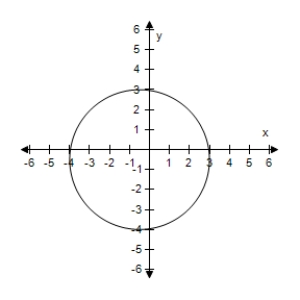
E)Centre ,Radius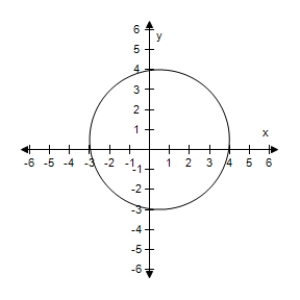
A)Centre ,Radius

B)Centre ,Radius

C)Centre ,Radius

D)Centre ,Radius

E)Centre ,Radius


فتح الحزمة
افتح القفل للوصول البطاقات البالغ عددها 63 في هذه المجموعة.
فتح الحزمة
k this deck
15
The resistance y (in ohms)of 1,000 feet of solid copper wire at 68 degrees Fahrenheit can be approximated by the model where x is the diameter of the wire in mils (0.001 inch). Complete the table.
Round the answer to two decimal places.
A)
B)
C)
D)
E)
Round the answer to two decimal places.
A)
B)
C)
D)
E)

فتح الحزمة
افتح القفل للوصول البطاقات البالغ عددها 63 في هذه المجموعة.
فتح الحزمة
k this deck
16
Write the standard form of the equation of the circle with the given characteristics.
Endpoints of a diameter: (2,2), (12,2)
A)
B)
C)
D)
E)
Endpoints of a diameter: (2,2), (12,2)
A)
B)
C)
D)
E)

فتح الحزمة
افتح القفل للوصول البطاقات البالغ عددها 63 في هذه المجموعة.
فتح الحزمة
k this deck
17
Graphically estimate the x- and y-intercepts of the graph. 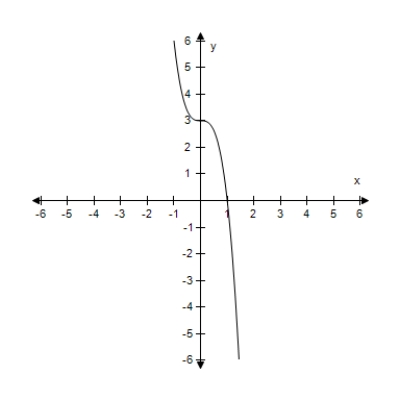
A)x-intercept: (0,1) y-intercept: (0,3)
B)x-intercept: (1,0) y-intercept: (3,0)
C)x-intercept: (0,1) y-intercept: (3,0)
D)x-intercept: (1,0) y-intercept: (0,3)
E)x-intercept: (1,0) y-intercept: (0,-3)

A)x-intercept: (0,1) y-intercept: (0,3)
B)x-intercept: (1,0) y-intercept: (3,0)
C)x-intercept: (0,1) y-intercept: (3,0)
D)x-intercept: (1,0) y-intercept: (0,3)
E)x-intercept: (1,0) y-intercept: (0,-3)

فتح الحزمة
افتح القفل للوصول البطاقات البالغ عددها 63 في هذه المجموعة.
فتح الحزمة
k this deck
18
Identify any intercepts and test for symmetry.Then sketch the graph of the equation.
Y = 2 - |x|
A)x- intercept: (±2,0) y- intercept: (0,2)
Y-axis symmetry
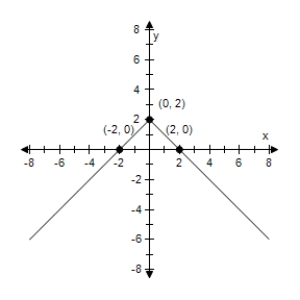
B)x- intercept: (-2,0) y- intercept: (0,2)
Y-axis symmetry
C)x- intercept: (2,0) y- intercept: (0,±2)
Y-axis symmetry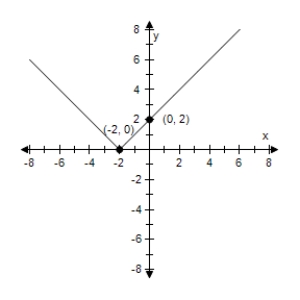
D)x- intercept: (2,0) y- intercept: (0,2)
Y-axis symmetry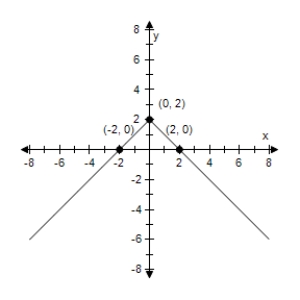
E)x- intercept: (-2,0) y- intercept: (0,2)
Y-axis symmetry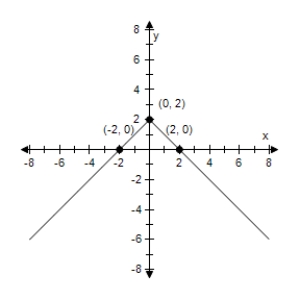
Y = 2 - |x|
A)x- intercept: (±2,0) y- intercept: (0,2)
Y-axis symmetry

B)x- intercept: (-2,0) y- intercept: (0,2)
Y-axis symmetry

C)x- intercept: (2,0) y- intercept: (0,±2)
Y-axis symmetry

D)x- intercept: (2,0) y- intercept: (0,2)
Y-axis symmetry

E)x- intercept: (-2,0) y- intercept: (0,2)
Y-axis symmetry


فتح الحزمة
افتح القفل للوصول البطاقات البالغ عددها 63 في هذه المجموعة.
فتح الحزمة
k this deck
19
Write the standard form of the equation of the circle with the given characteristics.
Center:(3,1);Radius: 7
A)
B)
C)
D)
E)
Center:(3,1);Radius: 7
A)
B)
C)
D)
E)

فتح الحزمة
افتح القفل للوصول البطاقات البالغ عددها 63 في هذه المجموعة.
فتح الحزمة
k this deck
20
Graphically estimate the x- and y-intercepts of the graph.
Y = |x + 3|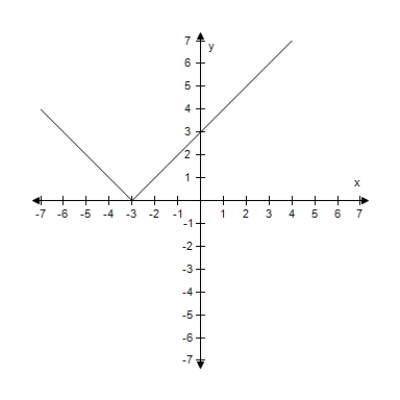
A)x-intercept: (-3,0) y-intercept: (0,3)
B)x-intercept: (0,-3) y-intercept: (3,0)
C)x-intercept: (0,-3) y-intercept: (0,3)
D)x-intercept: (3,0) y-intercept: (3,0)
E)x-intercept: (0,3) y-intercept: (3,0)
Y = |x + 3|

A)x-intercept: (-3,0) y-intercept: (0,3)
B)x-intercept: (0,-3) y-intercept: (3,0)
C)x-intercept: (0,-3) y-intercept: (0,3)
D)x-intercept: (3,0) y-intercept: (3,0)
E)x-intercept: (0,3) y-intercept: (3,0)

فتح الحزمة
افتح القفل للوصول البطاقات البالغ عددها 63 في هذه المجموعة.
فتح الحزمة
k this deck
21
Use a graphing utility to graph the equation.Use a standard setting.Approximate any intercepts.
A)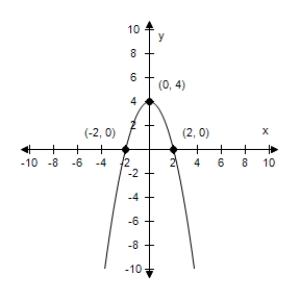 Intercepts: (-2,0), (2,0), (0,4)
Intercepts: (-2,0), (2,0), (0,4)
B)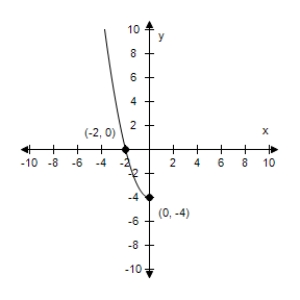 Intercepts: (-2,0), (0,-4)
Intercepts: (-2,0), (0,-4)
C)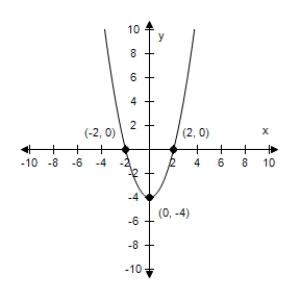 Intercepts: (-2,0), (2,0), (0,-4)
Intercepts: (-2,0), (2,0), (0,-4)
D)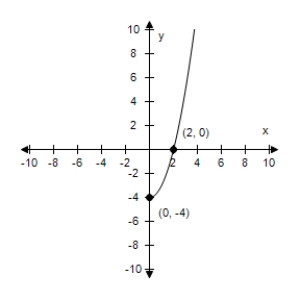 Intercepts: (2,0), (0,-4)
Intercepts: (2,0), (0,-4)
E) Intercepts: (2,0), (0,4)
Intercepts: (2,0), (0,4)
A)
 Intercepts: (-2,0), (2,0), (0,4)
Intercepts: (-2,0), (2,0), (0,4)B)
 Intercepts: (-2,0), (0,-4)
Intercepts: (-2,0), (0,-4)C)
 Intercepts: (-2,0), (2,0), (0,-4)
Intercepts: (-2,0), (2,0), (0,-4)D)
 Intercepts: (2,0), (0,-4)
Intercepts: (2,0), (0,-4)E)
 Intercepts: (2,0), (0,4)
Intercepts: (2,0), (0,4)
فتح الحزمة
افتح القفل للوصول البطاقات البالغ عددها 63 في هذه المجموعة.
فتح الحزمة
k this deck
22
Determine which point does not lie on the graph of the equation
A)(-2,-15)
B)(-4,-17)
C)(7,-10)
D)(4,-6)
E)(0,-13)
A)(-2,-15)
B)(-4,-17)
C)(7,-10)
D)(4,-6)
E)(0,-13)

فتح الحزمة
افتح القفل للوصول البطاقات البالغ عددها 63 في هذه المجموعة.
فتح الحزمة
k this deck
23
Use algebraic tests to check the following for symmetry with respect to the axes and the origin.
A)Symmetric with respect to the origin.
B)No symmetry.
C)Symmetric with respect to the y-axis.
D)Symmetric with respect to the x-axis.
A)Symmetric with respect to the origin.
B)No symmetry.
C)Symmetric with respect to the y-axis.
D)Symmetric with respect to the x-axis.

فتح الحزمة
افتح القفل للوصول البطاقات البالغ عددها 63 في هذه المجموعة.
فتح الحزمة
k this deck
24
Use a graphing utility to graph the equation.Use a standard setting.Approximate any intercepts.
A)Intercepts: (0,0), (-2,0)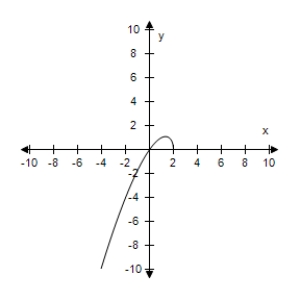
B)Intercepts: (0,0), (2,0)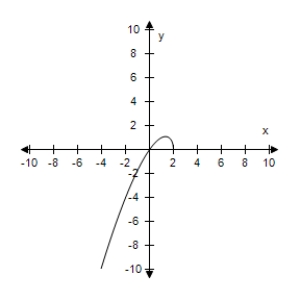
C)Intercepts: (0,0), (-2,0)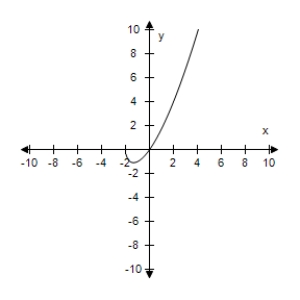
D)Intercepts: (0,0), (-2,0)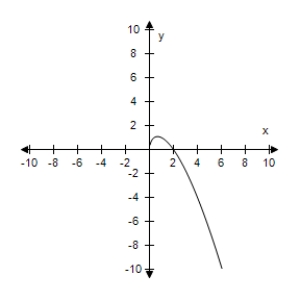
E)Intercepts: (0,0), (6,0)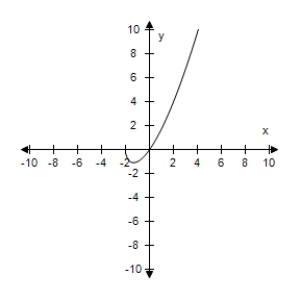
A)Intercepts: (0,0), (-2,0)

B)Intercepts: (0,0), (2,0)

C)Intercepts: (0,0), (-2,0)

D)Intercepts: (0,0), (-2,0)

E)Intercepts: (0,0), (6,0)


فتح الحزمة
افتح القفل للوصول البطاقات البالغ عددها 63 في هذه المجموعة.
فتح الحزمة
k this deck
25
Create and complete a table to find the x and y coordinates of points that lie on the graph of the equation below.Plot at least 5 points along with the graph of the equation. 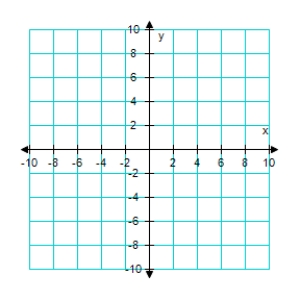
A)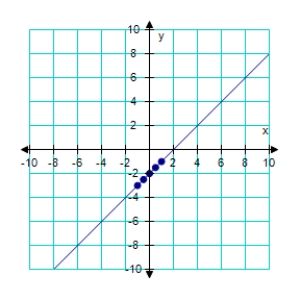
B)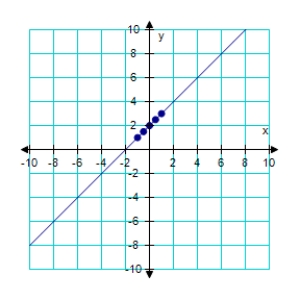
C)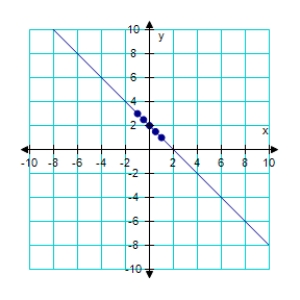
D)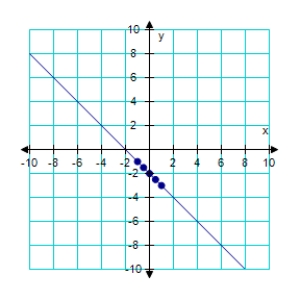
E)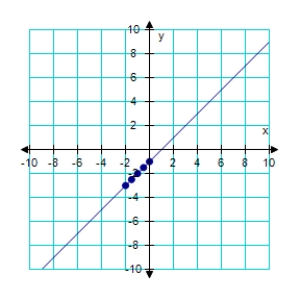

A)

B)

C)

D)

E)


فتح الحزمة
افتح القفل للوصول البطاقات البالغ عددها 63 في هذه المجموعة.
فتح الحزمة
k this deck
26
Determine which of the following point lies on the graph of the equation.
Y = 3 - |x - 1|
A)(4,2)
B)(6,0)
C)(5,0)
D)(4,0)
E)(4,1)
Y = 3 - |x - 1|
A)(4,2)
B)(6,0)
C)(5,0)
D)(4,0)
E)(4,1)

فتح الحزمة
افتح القفل للوصول البطاقات البالغ عددها 63 في هذه المجموعة.
فتح الحزمة
k this deck
27
Find the x- and y-intercepts of the graph of the equation .
A)x-intercept: y-intercept: (0,13)
B) x-intercept:
Y-intercept: (0,-7)
C)x-intercept: (-7,0) y-intercept: (0,13)
D)x-intercept: y-intercept: none
E)x-intercept: y-intercept: (0,7)
A)x-intercept: y-intercept: (0,13)
B) x-intercept:
Y-intercept: (0,-7)
C)x-intercept: (-7,0) y-intercept: (0,13)
D)x-intercept: y-intercept: none
E)x-intercept: y-intercept: (0,7)

فتح الحزمة
افتح القفل للوصول البطاقات البالغ عددها 63 في هذه المجموعة.
فتح الحزمة
k this deck
28
Identify any intercepts and test for symmetry.Then sketch the graph of the equation.? ?
A)x-intercept : none y-intercept : (0,3)
The graph has y-symmetry.?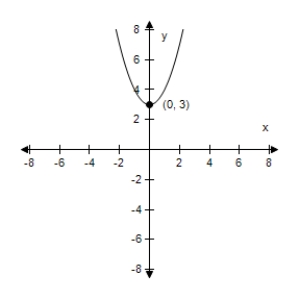
B)x-intercept : (0,0), (-3,0) y-intercept : (0,0)
No symmetry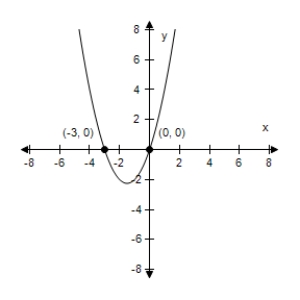
C)x-intercept : (0,0), (-3,0) y-intercept : (0,0)
No symmetry
?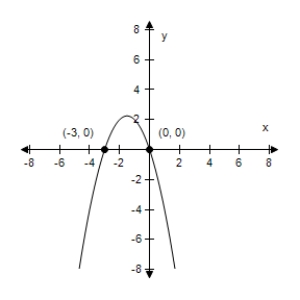
D)x-intercept : (0,0), (3,0) y-intercept : (0,0)
No symmetry
?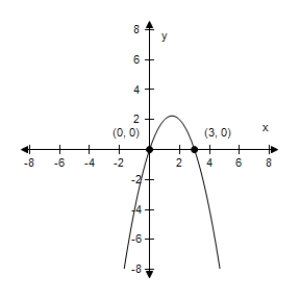
E)x-intercept : (0,0), (3,0) y-intercept : (0,0)
No symmetry
?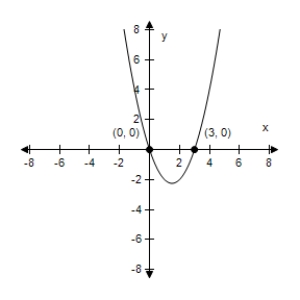
?
A)x-intercept : none y-intercept : (0,3)
The graph has y-symmetry.?

B)x-intercept : (0,0), (-3,0) y-intercept : (0,0)
No symmetry

C)x-intercept : (0,0), (-3,0) y-intercept : (0,0)
No symmetry
?

D)x-intercept : (0,0), (3,0) y-intercept : (0,0)
No symmetry
?

E)x-intercept : (0,0), (3,0) y-intercept : (0,0)
No symmetry
?

?

فتح الحزمة
افتح القفل للوصول البطاقات البالغ عددها 63 في هذه المجموعة.
فتح الحزمة
k this deck
29
Identify any intercepts and test for symmetry.Then sketch the graph of the equation.
A)x-intercept: (2,0) y-intercept: none
No symmetry
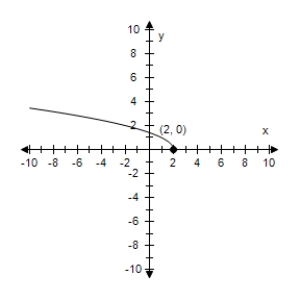
B)x-intercept: (2,0) y-intercept: none
No symmetry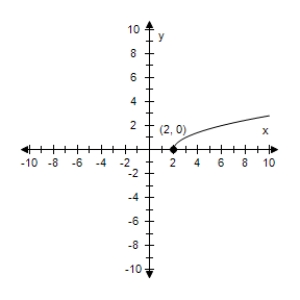
C)x-intercept: (2,0) y-intercept: (0, )
No symmetry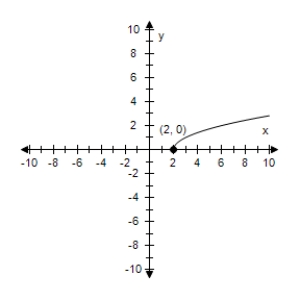
D)x-intercept: (-2,0) y-intercept: none
No symmetry
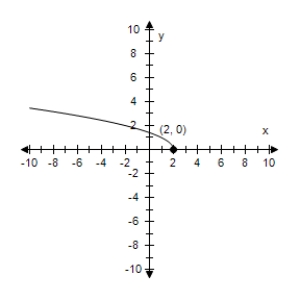
E)x-intercept: (-2,0) y-intercept: none
No symmetry
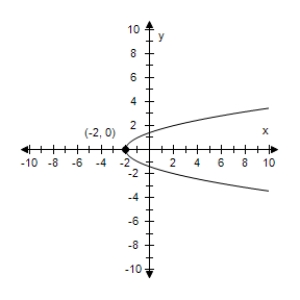
A)x-intercept: (2,0) y-intercept: none
No symmetry

B)x-intercept: (2,0) y-intercept: none
No symmetry

C)x-intercept: (2,0) y-intercept: (0, )
No symmetry

D)x-intercept: (-2,0) y-intercept: none
No symmetry

E)x-intercept: (-2,0) y-intercept: none
No symmetry


فتح الحزمة
افتح القفل للوصول البطاقات البالغ عددها 63 في هذه المجموعة.
فتح الحزمة
k this deck
30
Determine which point lies on the graph of the equation
A)(0,-10)
B)(1,-10)
C)(0,-12)
D)(2,-11)
E)(1,-12)
A)(0,-10)
B)(1,-10)
C)(0,-12)
D)(2,-11)
E)(1,-12)

فتح الحزمة
افتح القفل للوصول البطاقات البالغ عددها 63 في هذه المجموعة.
فتح الحزمة
k this deck
31
Graphically estimate the x- and y-intercepts of the graph. 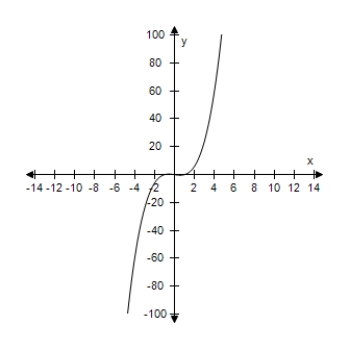
A)x-intercept: (±1,0), (0,0) y-intercept: (0,0)
B)x-intercept: (1,0), (0,0) y-intercept: (0,0)
C)x-intercept: (-1,0), (0,0) y-intercept: (0,0)
D)x-intercept: (0,±1), (0,0) y-intercept: (0,0)
E)x-intercept: (0,1), (0,0) y-intercept: (0,0)

A)x-intercept: (±1,0), (0,0) y-intercept: (0,0)
B)x-intercept: (1,0), (0,0) y-intercept: (0,0)
C)x-intercept: (-1,0), (0,0) y-intercept: (0,0)
D)x-intercept: (0,±1), (0,0) y-intercept: (0,0)
E)x-intercept: (0,1), (0,0) y-intercept: (0,0)

فتح الحزمة
افتح القفل للوصول البطاقات البالغ عددها 63 في هذه المجموعة.
فتح الحزمة
k this deck
32
Use a graphing utility to graph the equation.Use a standard setting.Approximate any intercepts.
Y = |x + 2|
A)Intercepts: (0,-2), (0,2)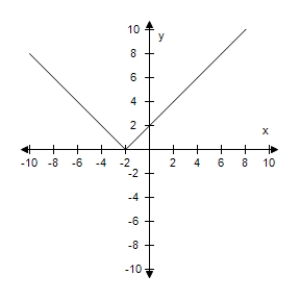
B)Intercepts: (-2,0), (0,-2)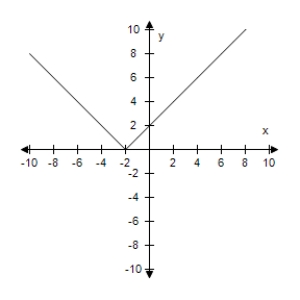
C)Intercepts: (2,0), (0,2)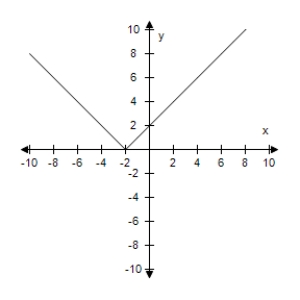
D)Intercepts: (-2,0), (0,2)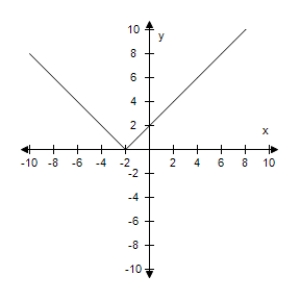
E)Intercepts: (-2,0), (2,0)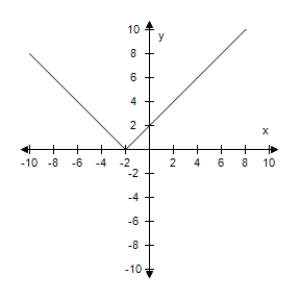
Y = |x + 2|
A)Intercepts: (0,-2), (0,2)

B)Intercepts: (-2,0), (0,-2)

C)Intercepts: (2,0), (0,2)

D)Intercepts: (-2,0), (0,2)

E)Intercepts: (-2,0), (2,0)


فتح الحزمة
افتح القفل للوصول البطاقات البالغ عددها 63 في هذه المجموعة.
فتح الحزمة
k this deck
33
Identify any intercepts and test for symmetry.Then sketch the graph of the equation.
A)x- intercept: ( ,0) y- intercept: (0,±6)
No symmetry![<strong>Identify any intercepts and test for symmetry.Then sketch the graph of the equation. y = x ^ { 3 } - 6 </strong> A)x- intercept: ( \sqrt [ 3 ] { 6 } ,0) y- intercept: (0,±6) No symmetry B)x- intercept: ( \sqrt [ 3 ] { 6 } ,0) y- intercept: (0,-6) No symmetry C)x- intercept: ( \sqrt [ 3 ] { 6 } ,0) y- intercept: (0,6) No symmetry D)x- intercept: ( \sqrt [ 3 ] { - 6 } ,0) y- intercept: (0,6) No symmetry E)x- intercept: ( \sqrt [ 3 ] { - 6 } ,0) y- intercept: (0,±6) No symmetry](https://d2lvgg3v3hfg70.cloudfront.net/TB4590/11ea99db_b74b_8a1a_94ac_17999705e5a8_TB4590_00.jpg)
B)x- intercept: ( ,0) y- intercept: (0,-6)
No symmetry
![<strong>Identify any intercepts and test for symmetry.Then sketch the graph of the equation. y = x ^ { 3 } - 6 </strong> A)x- intercept: ( \sqrt [ 3 ] { 6 } ,0) y- intercept: (0,±6) No symmetry B)x- intercept: ( \sqrt [ 3 ] { 6 } ,0) y- intercept: (0,-6) No symmetry C)x- intercept: ( \sqrt [ 3 ] { 6 } ,0) y- intercept: (0,6) No symmetry D)x- intercept: ( \sqrt [ 3 ] { - 6 } ,0) y- intercept: (0,6) No symmetry E)x- intercept: ( \sqrt [ 3 ] { - 6 } ,0) y- intercept: (0,±6) No symmetry](https://d2lvgg3v3hfg70.cloudfront.net/TB4590/11ea99db_b74b_b12c_94ac_65b021d51109_TB4590_00.jpg)
C)x- intercept: ( ,0) y- intercept: (0,6)
No symmetry![<strong>Identify any intercepts and test for symmetry.Then sketch the graph of the equation. y = x ^ { 3 } - 6 </strong> A)x- intercept: ( \sqrt [ 3 ] { 6 } ,0) y- intercept: (0,±6) No symmetry B)x- intercept: ( \sqrt [ 3 ] { 6 } ,0) y- intercept: (0,-6) No symmetry C)x- intercept: ( \sqrt [ 3 ] { 6 } ,0) y- intercept: (0,6) No symmetry D)x- intercept: ( \sqrt [ 3 ] { - 6 } ,0) y- intercept: (0,6) No symmetry E)x- intercept: ( \sqrt [ 3 ] { - 6 } ,0) y- intercept: (0,±6) No symmetry](https://d2lvgg3v3hfg70.cloudfront.net/TB4590/11ea99db_b74b_d83e_94ac_f9e4c4ee5a49_TB4590_00.jpg)
D)x- intercept: ( ,0) y- intercept: (0,6)
No symmetry
![<strong>Identify any intercepts and test for symmetry.Then sketch the graph of the equation. y = x ^ { 3 } - 6 </strong> A)x- intercept: ( \sqrt [ 3 ] { 6 } ,0) y- intercept: (0,±6) No symmetry B)x- intercept: ( \sqrt [ 3 ] { 6 } ,0) y- intercept: (0,-6) No symmetry C)x- intercept: ( \sqrt [ 3 ] { 6 } ,0) y- intercept: (0,6) No symmetry D)x- intercept: ( \sqrt [ 3 ] { - 6 } ,0) y- intercept: (0,6) No symmetry E)x- intercept: ( \sqrt [ 3 ] { - 6 } ,0) y- intercept: (0,±6) No symmetry](https://d2lvgg3v3hfg70.cloudfront.net/TB4590/11ea99db_b74b_ff50_94ac_43ad52a62103_TB4590_00.jpg)
E)x- intercept: ( ,0) y- intercept: (0,±6)
No symmetry![<strong>Identify any intercepts and test for symmetry.Then sketch the graph of the equation. y = x ^ { 3 } - 6 </strong> A)x- intercept: ( \sqrt [ 3 ] { 6 } ,0) y- intercept: (0,±6) No symmetry B)x- intercept: ( \sqrt [ 3 ] { 6 } ,0) y- intercept: (0,-6) No symmetry C)x- intercept: ( \sqrt [ 3 ] { 6 } ,0) y- intercept: (0,6) No symmetry D)x- intercept: ( \sqrt [ 3 ] { - 6 } ,0) y- intercept: (0,6) No symmetry E)x- intercept: ( \sqrt [ 3 ] { - 6 } ,0) y- intercept: (0,±6) No symmetry](https://d2lvgg3v3hfg70.cloudfront.net/TB4590/11ea99db_b74b_ff52_94ac_9b2f245d5ef0_TB4590_00.jpg)
A)x- intercept: ( ,0) y- intercept: (0,±6)
No symmetry
![<strong>Identify any intercepts and test for symmetry.Then sketch the graph of the equation. y = x ^ { 3 } - 6 </strong> A)x- intercept: ( \sqrt [ 3 ] { 6 } ,0) y- intercept: (0,±6) No symmetry B)x- intercept: ( \sqrt [ 3 ] { 6 } ,0) y- intercept: (0,-6) No symmetry C)x- intercept: ( \sqrt [ 3 ] { 6 } ,0) y- intercept: (0,6) No symmetry D)x- intercept: ( \sqrt [ 3 ] { - 6 } ,0) y- intercept: (0,6) No symmetry E)x- intercept: ( \sqrt [ 3 ] { - 6 } ,0) y- intercept: (0,±6) No symmetry](https://d2lvgg3v3hfg70.cloudfront.net/TB4590/11ea99db_b74b_8a1a_94ac_17999705e5a8_TB4590_00.jpg)
B)x- intercept: ( ,0) y- intercept: (0,-6)
No symmetry
![<strong>Identify any intercepts and test for symmetry.Then sketch the graph of the equation. y = x ^ { 3 } - 6 </strong> A)x- intercept: ( \sqrt [ 3 ] { 6 } ,0) y- intercept: (0,±6) No symmetry B)x- intercept: ( \sqrt [ 3 ] { 6 } ,0) y- intercept: (0,-6) No symmetry C)x- intercept: ( \sqrt [ 3 ] { 6 } ,0) y- intercept: (0,6) No symmetry D)x- intercept: ( \sqrt [ 3 ] { - 6 } ,0) y- intercept: (0,6) No symmetry E)x- intercept: ( \sqrt [ 3 ] { - 6 } ,0) y- intercept: (0,±6) No symmetry](https://d2lvgg3v3hfg70.cloudfront.net/TB4590/11ea99db_b74b_b12c_94ac_65b021d51109_TB4590_00.jpg)
C)x- intercept: ( ,0) y- intercept: (0,6)
No symmetry
![<strong>Identify any intercepts and test for symmetry.Then sketch the graph of the equation. y = x ^ { 3 } - 6 </strong> A)x- intercept: ( \sqrt [ 3 ] { 6 } ,0) y- intercept: (0,±6) No symmetry B)x- intercept: ( \sqrt [ 3 ] { 6 } ,0) y- intercept: (0,-6) No symmetry C)x- intercept: ( \sqrt [ 3 ] { 6 } ,0) y- intercept: (0,6) No symmetry D)x- intercept: ( \sqrt [ 3 ] { - 6 } ,0) y- intercept: (0,6) No symmetry E)x- intercept: ( \sqrt [ 3 ] { - 6 } ,0) y- intercept: (0,±6) No symmetry](https://d2lvgg3v3hfg70.cloudfront.net/TB4590/11ea99db_b74b_d83e_94ac_f9e4c4ee5a49_TB4590_00.jpg)
D)x- intercept: ( ,0) y- intercept: (0,6)
No symmetry
![<strong>Identify any intercepts and test for symmetry.Then sketch the graph of the equation. y = x ^ { 3 } - 6 </strong> A)x- intercept: ( \sqrt [ 3 ] { 6 } ,0) y- intercept: (0,±6) No symmetry B)x- intercept: ( \sqrt [ 3 ] { 6 } ,0) y- intercept: (0,-6) No symmetry C)x- intercept: ( \sqrt [ 3 ] { 6 } ,0) y- intercept: (0,6) No symmetry D)x- intercept: ( \sqrt [ 3 ] { - 6 } ,0) y- intercept: (0,6) No symmetry E)x- intercept: ( \sqrt [ 3 ] { - 6 } ,0) y- intercept: (0,±6) No symmetry](https://d2lvgg3v3hfg70.cloudfront.net/TB4590/11ea99db_b74b_ff50_94ac_43ad52a62103_TB4590_00.jpg)
E)x- intercept: ( ,0) y- intercept: (0,±6)
No symmetry
![<strong>Identify any intercepts and test for symmetry.Then sketch the graph of the equation. y = x ^ { 3 } - 6 </strong> A)x- intercept: ( \sqrt [ 3 ] { 6 } ,0) y- intercept: (0,±6) No symmetry B)x- intercept: ( \sqrt [ 3 ] { 6 } ,0) y- intercept: (0,-6) No symmetry C)x- intercept: ( \sqrt [ 3 ] { 6 } ,0) y- intercept: (0,6) No symmetry D)x- intercept: ( \sqrt [ 3 ] { - 6 } ,0) y- intercept: (0,6) No symmetry E)x- intercept: ( \sqrt [ 3 ] { - 6 } ,0) y- intercept: (0,±6) No symmetry](https://d2lvgg3v3hfg70.cloudfront.net/TB4590/11ea99db_b74b_ff52_94ac_9b2f245d5ef0_TB4590_00.jpg)

فتح الحزمة
افتح القفل للوصول البطاقات البالغ عددها 63 في هذه المجموعة.
فتح الحزمة
k this deck
34
Assume that the graph has y-symmetry.Select the complete graph of the equation. 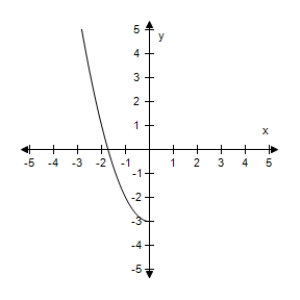
A)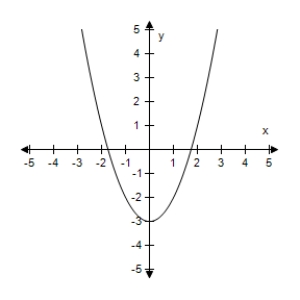
B)
C)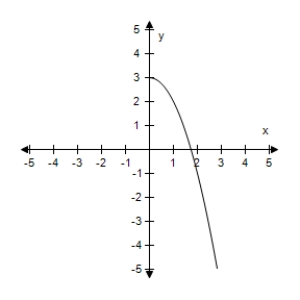
D)
E)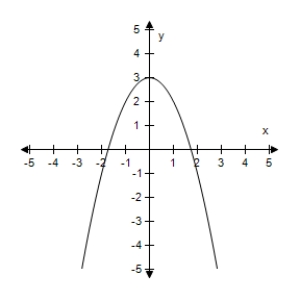

A)

B)

C)

D)

E)


فتح الحزمة
افتح القفل للوصول البطاقات البالغ عددها 63 في هذه المجموعة.
فتح الحزمة
k this deck
35
Find the x- and y-intercepts of the graph of the equation .
A)x-intercept:
y-intercept:
B) x-intercept:
Y-intercept: .
C)x-intercept:
y-intercept:
D)x-intercept:
y-intercept:
E)x-intercept:
y-intercept: .
A)x-intercept:
y-intercept:
B) x-intercept:
Y-intercept: .
C)x-intercept:
y-intercept:
D)x-intercept:
y-intercept:
E)x-intercept:
y-intercept: .

فتح الحزمة
افتح القفل للوصول البطاقات البالغ عددها 63 في هذه المجموعة.
فتح الحزمة
k this deck
36
Assume that the graph has Origin symmetry.Select the complete graph of the equation. 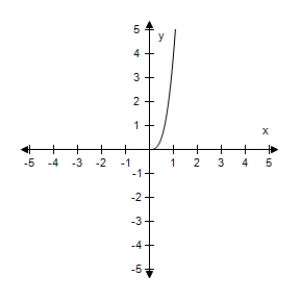
A)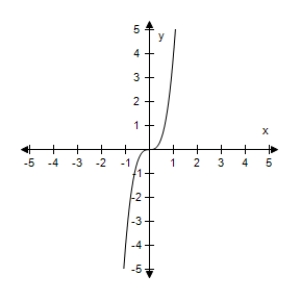
B)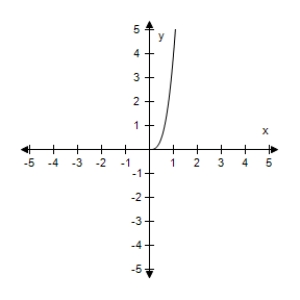
C)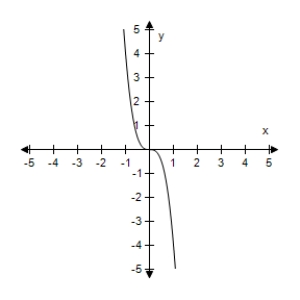
D)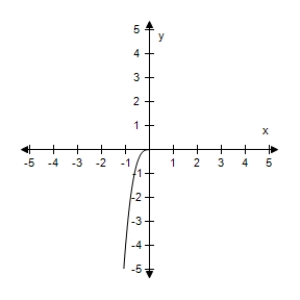
E)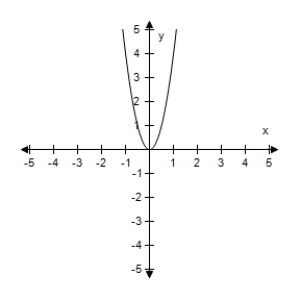

A)

B)

C)

D)

E)


فتح الحزمة
افتح القفل للوصول البطاقات البالغ عددها 63 في هذه المجموعة.
فتح الحزمة
k this deck
37
Complete the table.Use the resulting solution points to sketch the graph of the equation.
A)
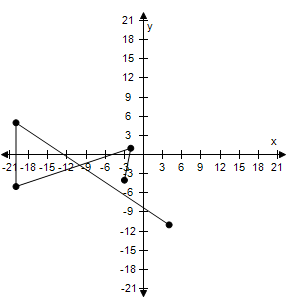
B)
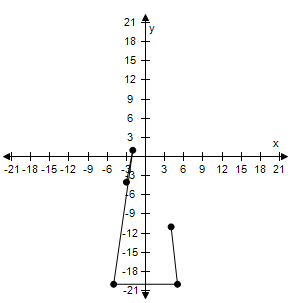
C)
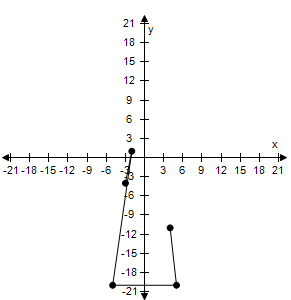
D)
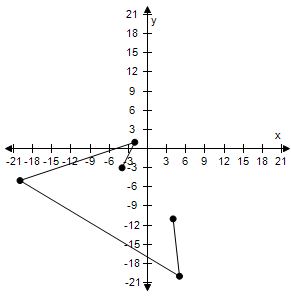
E)
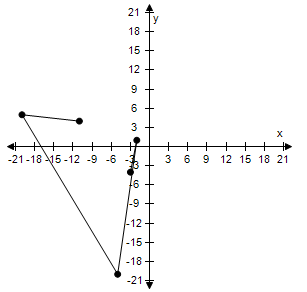
A)

B)

C)

D)

E)


فتح الحزمة
افتح القفل للوصول البطاقات البالغ عددها 63 في هذه المجموعة.
فتح الحزمة
k this deck
38
Use a graphing utility to graph the equation.Use a standard setting.Approximate any intercepts.
A)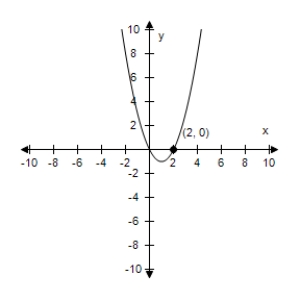 Intercepts: (0,0), (-2,0)
Intercepts: (0,0), (-2,0)
B)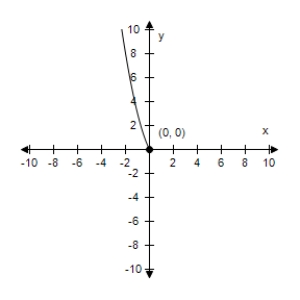 Intercepts: (0,0)
Intercepts: (0,0)
C)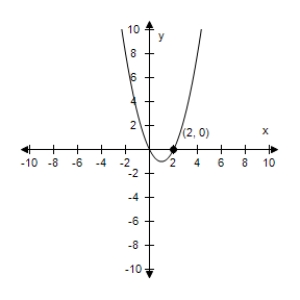 Intercepts: (0,0), (2,0)
Intercepts: (0,0), (2,0)
D)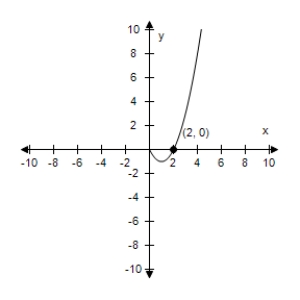 Intercepts: (2,0), (0,0)
Intercepts: (2,0), (0,0)
E)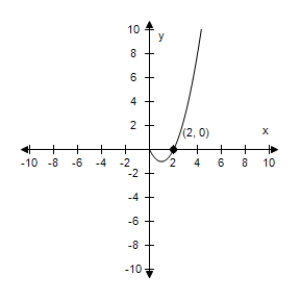 Intercepts: (-2,0), (0,0)
Intercepts: (-2,0), (0,0)
A)
 Intercepts: (0,0), (-2,0)
Intercepts: (0,0), (-2,0)B)
 Intercepts: (0,0)
Intercepts: (0,0)C)
 Intercepts: (0,0), (2,0)
Intercepts: (0,0), (2,0)D)
 Intercepts: (2,0), (0,0)
Intercepts: (2,0), (0,0)E)
 Intercepts: (-2,0), (0,0)
Intercepts: (-2,0), (0,0) 
فتح الحزمة
افتح القفل للوصول البطاقات البالغ عددها 63 في هذه المجموعة.
فتح الحزمة
k this deck
39
Graphically estimate the x- and y-intercepts of the graph. 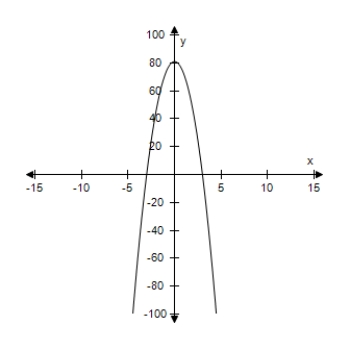
A)x-intercept: (±3,0) y-intercept: (0,81)
B)x-intercept: (3,0) y-intercept: (0,81)
C)x-intercept: (-3,0) y-intercept: (0,81)
D)x-intercept: (±3,0) y-intercept: (0,9)
E)x-intercept: (0,3) y-intercept: (0,81)

A)x-intercept: (±3,0) y-intercept: (0,81)
B)x-intercept: (3,0) y-intercept: (0,81)
C)x-intercept: (-3,0) y-intercept: (0,81)
D)x-intercept: (±3,0) y-intercept: (0,9)
E)x-intercept: (0,3) y-intercept: (0,81)

فتح الحزمة
افتح القفل للوصول البطاقات البالغ عددها 63 في هذه المجموعة.
فتح الحزمة
k this deck
40
Use a graphing utility to graph the equation.Use a standard setting.Approximate any intercepts.
A)Intercepts: (0,7), (-14,0)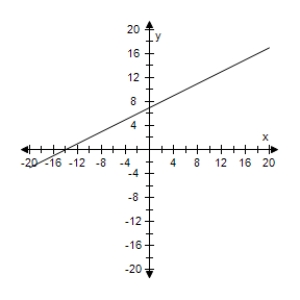
B)Intercepts: (-14,0), (0,-7)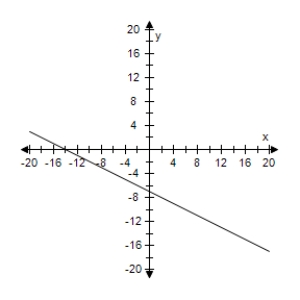
C)Intercepts: (14,0), (0,-7)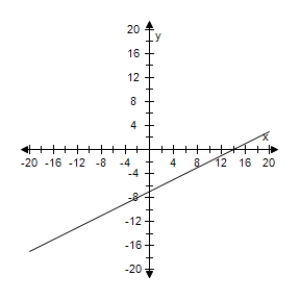
D)Intercepts: (0,8), (15,0)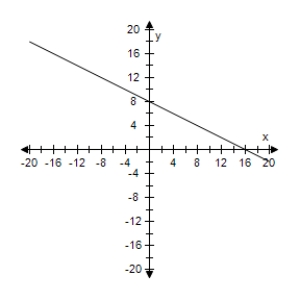
E)Intercepts: (14,0), (0,7)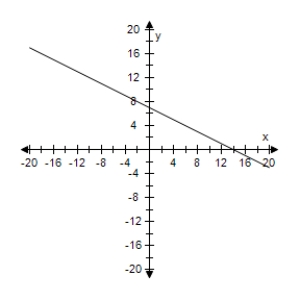
A)Intercepts: (0,7), (-14,0)

B)Intercepts: (-14,0), (0,-7)

C)Intercepts: (14,0), (0,-7)

D)Intercepts: (0,8), (15,0)

E)Intercepts: (14,0), (0,7)


فتح الحزمة
افتح القفل للوصول البطاقات البالغ عددها 63 في هذه المجموعة.
فتح الحزمة
k this deck
41
Find the value of x that corresponds to y = 7 in the graph of the equation 4x - 3y = -37.
A)4
B)-16
C)-3
D)3
E)-4
A)4
B)-16
C)-3
D)3
E)-4

فتح الحزمة
افتح القفل للوصول البطاقات البالغ عددها 63 في هذه المجموعة.
فتح الحزمة
k this deck
42
You purchase a house for $250,000. The depreciated value, y, after x years is given by y = 250,000 – 12,500x. Sketch the graph of the equation given 0 ≤ x ≤ 8.
A)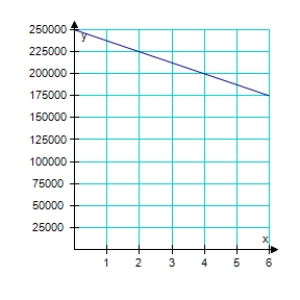
B)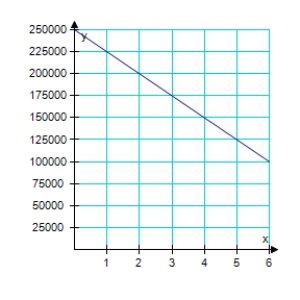
C)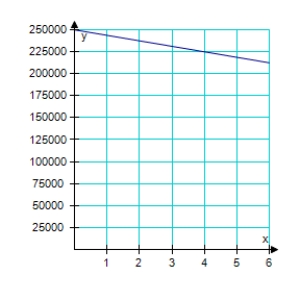
D)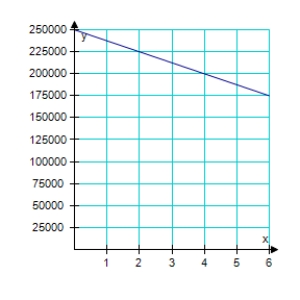
E)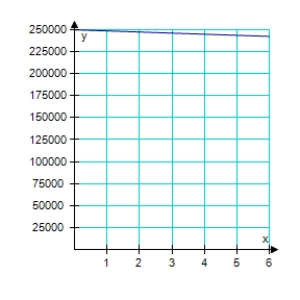
A)

B)

C)

D)

E)


فتح الحزمة
افتح القفل للوصول البطاقات البالغ عددها 63 في هذه المجموعة.
فتح الحزمة
k this deck
43
Sketch the graph of the equation .
A)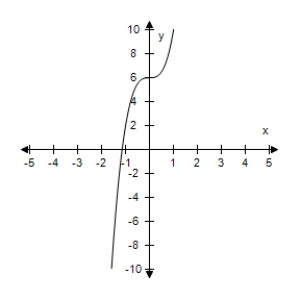
B)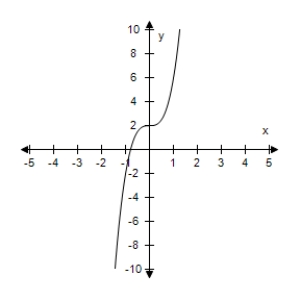
C)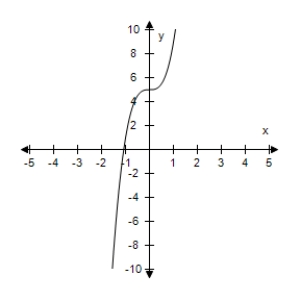
D)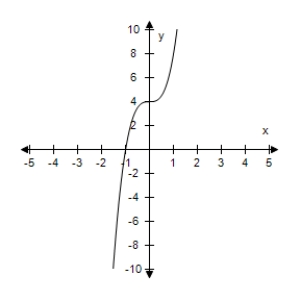
E)
A)

B)

C)

D)

E)


فتح الحزمة
افتح القفل للوصول البطاقات البالغ عددها 63 في هذه المجموعة.
فتح الحزمة
k this deck
44
Assume the graph has the indicated type of symmetry.Sketch the complete graph. 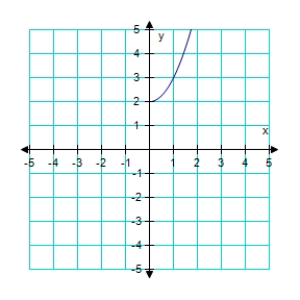 symmetric with respect to the origin.
symmetric with respect to the origin.
A)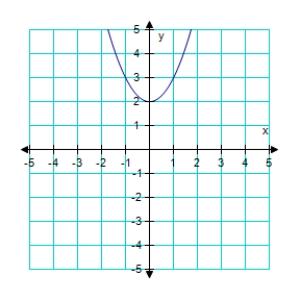
B)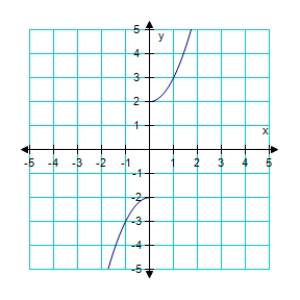
C)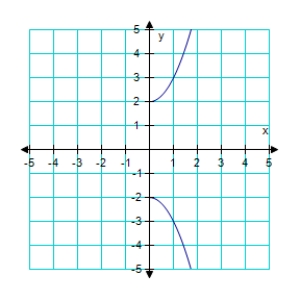
D)
E)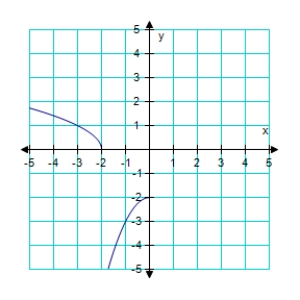
 symmetric with respect to the origin.
symmetric with respect to the origin.A)

B)

C)

D)

E)


فتح الحزمة
افتح القفل للوصول البطاقات البالغ عددها 63 في هذه المجموعة.
فتح الحزمة
k this deck
45
Find the center and radius of the circle .
A)center: (0,0),radius: 11
B)center: (-1,1),radius: 11
C)center: (0,0),radius: 7
D)center: (-1,-1),radius: 7
E)center: (-7,-11),radius: 7
A)center: (0,0),radius: 11
B)center: (-1,1),radius: 11
C)center: (0,0),radius: 7
D)center: (-1,-1),radius: 7
E)center: (-7,-11),radius: 7

فتح الحزمة
افتح القفل للوصول البطاقات البالغ عددها 63 في هذه المجموعة.
فتح الحزمة
k this deck
46
Use algebraic tests to check the following for symmetry with respect to the axes and the origin.
A)No symmetry.
B)Symmetric with respect to the y-axis.
C)Symmetric with respect to the origin.
D)Symmetric with respect to the x-axis.
A)No symmetry.
B)Symmetric with respect to the y-axis.
C)Symmetric with respect to the origin.
D)Symmetric with respect to the x-axis.

فتح الحزمة
افتح القفل للوصول البطاقات البالغ عددها 63 في هذه المجموعة.
فتح الحزمة
k this deck
47
Find the graph of the equation.
A)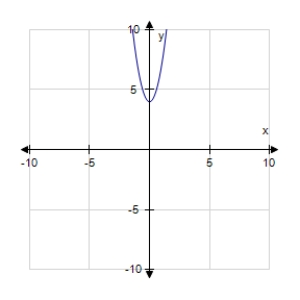
B)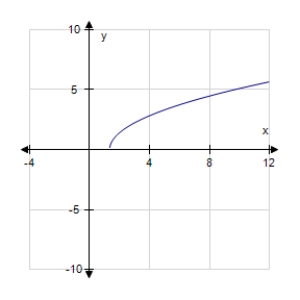
C)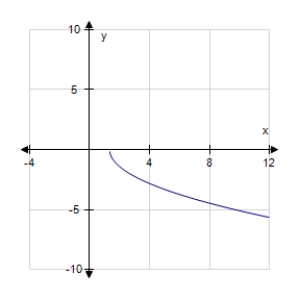
D)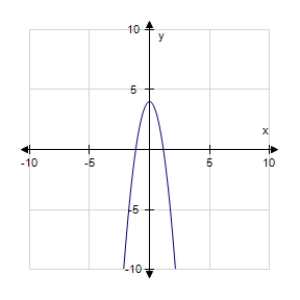
A)

B)

C)

D)


فتح الحزمة
افتح القفل للوصول البطاقات البالغ عددها 63 في هذه المجموعة.
فتح الحزمة
k this deck
48
Find the value of y that corresponds to x = -4 in the graph of the equation 2x + 3y = 13.
A)9
B)-7
C)-9
D)21
E)7
A)9
B)-7
C)-9
D)21
E)7

فتح الحزمة
افتح القفل للوصول البطاقات البالغ عددها 63 في هذه المجموعة.
فتح الحزمة
k this deck
49
Find the center and radius of the circle .
A)center: (1,5),radius 5
B)center: (5,1),radius 25
C)center: (-5,-1),radius 5
D)center: (-5,-1),radius 25
E)center: (5,1),radius 5
A)center: (1,5),radius 5
B)center: (5,1),radius 25
C)center: (-5,-1),radius 5
D)center: (-5,-1),radius 25
E)center: (5,1),radius 5

فتح الحزمة
افتح القفل للوصول البطاقات البالغ عددها 63 في هذه المجموعة.
فتح الحزمة
k this deck
50
Write the standard form of the equation of the circle with the given characteristics. center: (-1,-5);radius: 6
A)
B)
C)
D)
E)
A)
B)
C)
D)
E)

فتح الحزمة
افتح القفل للوصول البطاقات البالغ عددها 63 في هذه المجموعة.
فتح الحزمة
k this deck
51
Find the x- and y-intercepts of the graph of the equation .
A)x-intercept: y-intercept: none
B)x-intercept: y-intercept:
C)x-intercept: y-intercept: none
D)x-intercept: y-intercept:
E)x-intercept: y-intercept: none
A)x-intercept: y-intercept: none
B)x-intercept: y-intercept:
C)x-intercept: y-intercept: none
D)x-intercept: y-intercept:
E)x-intercept: y-intercept: none

فتح الحزمة
افتح القفل للوصول البطاقات البالغ عددها 63 في هذه المجموعة.
فتح الحزمة
k this deck
52
Find the y-intercept of the graph of the equation 4y = 3x + 12.
A)(0,-3)
B)(-4,0)
C)(0,3)
D)(0,-4)
E)(0,12)
A)(0,-3)
B)(-4,0)
C)(0,3)
D)(0,-4)
E)(0,12)

فتح الحزمة
افتح القفل للوصول البطاقات البالغ عددها 63 في هذه المجموعة.
فتح الحزمة
k this deck
53
Write the standard form of the equation of the circle with the given characteristics. endpoints of a diameter: (3,4), (7,8)
A)
B)
C)
D)
E)
A)
B)
C)
D)
E)

فتح الحزمة
افتح القفل للوصول البطاقات البالغ عددها 63 في هذه المجموعة.
فتح الحزمة
k this deck
54
Find the graph of the equation. ?
F (x)= | x - 2 |
A)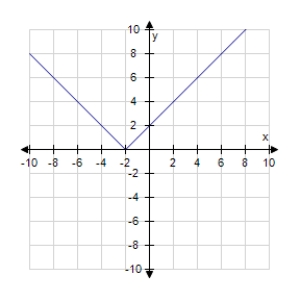
B)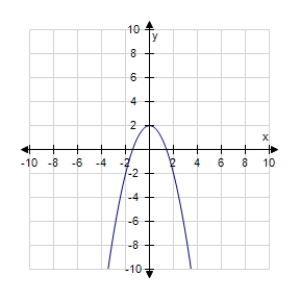
C)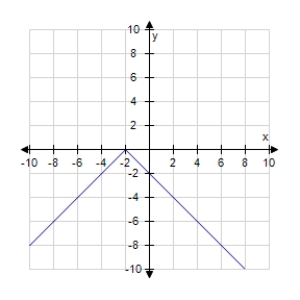
D)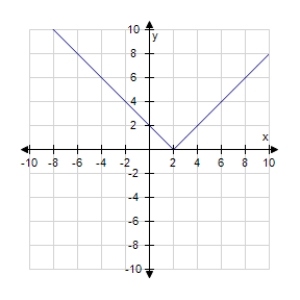
F (x)= | x - 2 |
A)

B)

C)

D)


فتح الحزمة
افتح القفل للوصول البطاقات البالغ عددها 63 في هذه المجموعة.
فتح الحزمة
k this deck
55
Find the x- and y-intercepts of the graph of the equation y = 36 - 6x.
A)x-intercept: (6,0) y-intercept: (0,-6)
B)x-intercept: (36,0) y-intercept: (0,6)
C)x-intercept: (-6,0) y-intercept: (0,-36)
D)x-intercept: (36,0) y-intercept: (0,36)
E)x-intercept: (6,0) y-intercept: (0,36)
A)x-intercept: (6,0) y-intercept: (0,-6)
B)x-intercept: (36,0) y-intercept: (0,6)
C)x-intercept: (-6,0) y-intercept: (0,-36)
D)x-intercept: (36,0) y-intercept: (0,36)
E)x-intercept: (6,0) y-intercept: (0,36)

فتح الحزمة
افتح القفل للوصول البطاقات البالغ عددها 63 في هذه المجموعة.
فتح الحزمة
k this deck
56
Write the standard form of the equation of the circle with the given characteristics. center: (-5,-4);solution point: (-3,-7)
A)
B)
C)
D)
E)
A)
B)
C)
D)
E)

فتح الحزمة
افتح القفل للوصول البطاقات البالغ عددها 63 في هذه المجموعة.
فتح الحزمة
k this deck
57
Find the x-intercept of the graph of the equation .
A)(0,-6)
B)(0,6)
C)(6,0)
D)(-6,0)
E)(0,-18)
A)(0,-6)
B)(0,6)
C)(6,0)
D)(-6,0)
E)(0,-18)

فتح الحزمة
افتح القفل للوصول البطاقات البالغ عددها 63 في هذه المجموعة.
فتح الحزمة
k this deck
58
Sketch the graph of the equation y = 4|x - 3| + 2.
A)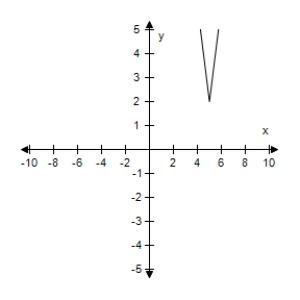
B)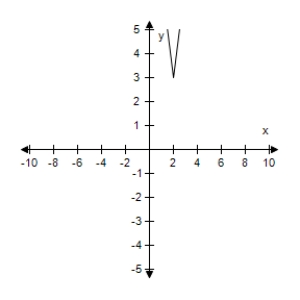
C)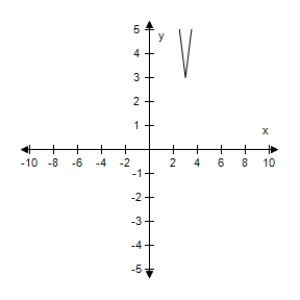
D)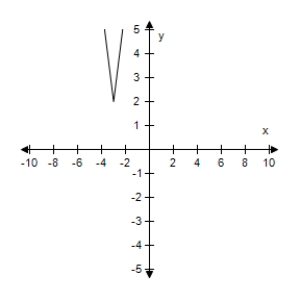
E)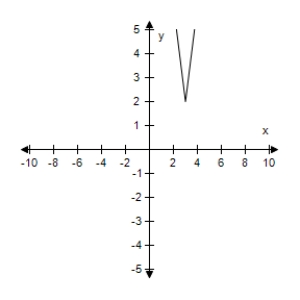
A)

B)

C)

D)

E)


فتح الحزمة
افتح القفل للوصول البطاقات البالغ عددها 63 في هذه المجموعة.
فتح الحزمة
k this deck
59
Find the x-intercept of the graph of the equation y = 3x + 15.
A)(0,-5)
B)(0,15)
C)(15,0)
D)(0,3)
E)(-5,0)
A)(0,-5)
B)(0,15)
C)(15,0)
D)(0,3)
E)(-5,0)

فتح الحزمة
افتح القفل للوصول البطاقات البالغ عددها 63 في هذه المجموعة.
فتح الحزمة
k this deck
60
Find the y-intercept of the graph of the equation y = 3x + 18.
A)(0,3)
B)(18,0)
C)(-6,0)
D)(0,18)
E)(0,-6)
A)(0,3)
B)(18,0)
C)(-6,0)
D)(0,18)
E)(0,-6)

فتح الحزمة
افتح القفل للوصول البطاقات البالغ عددها 63 في هذه المجموعة.
فتح الحزمة
k this deck
61
Graph the circle . ?
A)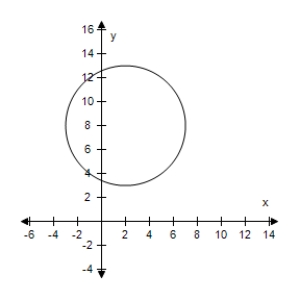
B)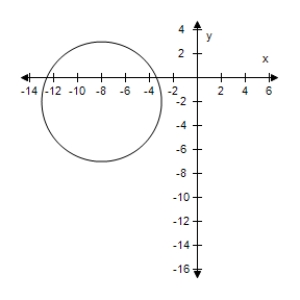
C)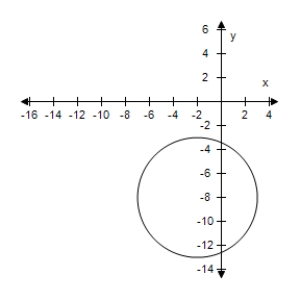
D)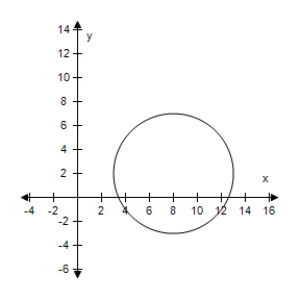
E)None of the above.
A)

B)

C)

D)

E)None of the above.

فتح الحزمة
افتح القفل للوصول البطاقات البالغ عددها 63 في هذه المجموعة.
فتح الحزمة
k this deck
62
Graph the circle
A)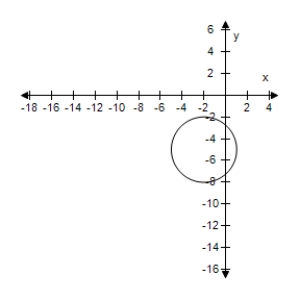
B)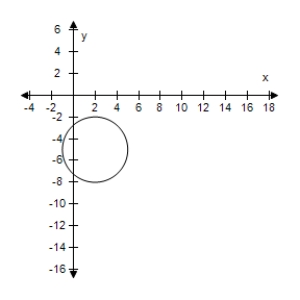
C)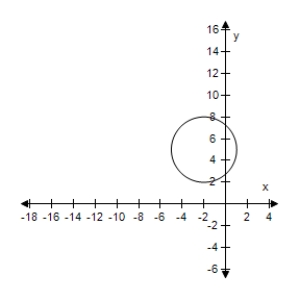
D)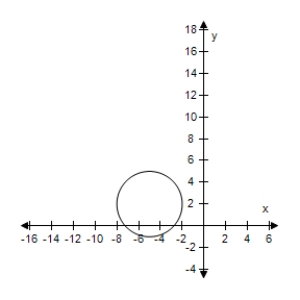
E)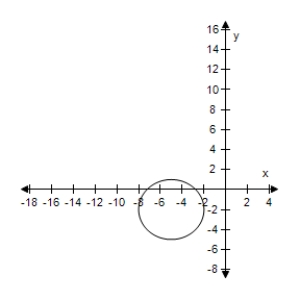
A)

B)

C)

D)

E)


فتح الحزمة
افتح القفل للوصول البطاقات البالغ عددها 63 في هذه المجموعة.
فتح الحزمة
k this deck
63
Find any x- or y-intercepts for the graph of the equation
A)x-intercepts: (0,12) y-intercepts: (2,0), (6,0)
B)x-intercepts: (-2,0), (-6,0) y-intercepts: (0,12)
C)x-intercepts: (2,0), (6,0) y-intercepts: none
D)x-intercepts: (0,2), (0,6) y-intercepts: (12,0)
E)x-intercepts: (2,0), (6,0) y-intercepts: (0,12)
A)x-intercepts: (0,12) y-intercepts: (2,0), (6,0)
B)x-intercepts: (-2,0), (-6,0) y-intercepts: (0,12)
C)x-intercepts: (2,0), (6,0) y-intercepts: none
D)x-intercepts: (0,2), (0,6) y-intercepts: (12,0)
E)x-intercepts: (2,0), (6,0) y-intercepts: (0,12)

فتح الحزمة
افتح القفل للوصول البطاقات البالغ عددها 63 في هذه المجموعة.
فتح الحزمة
k this deck








